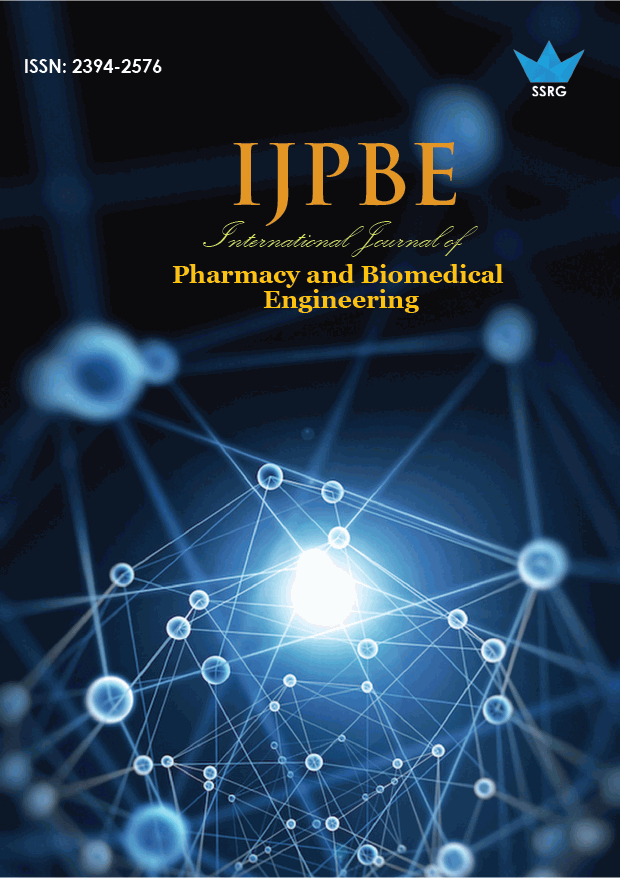Characterisation of Pathogens Identification and Classifications

| International Journal of Pharmacy and Biomedical Engineering |
| © 2018 by SSRG - IJPBE Journal |
| Volume 5 Issue 1 |
| Year of Publication : 2018 |
| Authors : M.Sourav Karar and R.Srilekh |
How to Cite?
M.Sourav Karar and R.Srilekh, "Characterisation of Pathogens Identification and Classifications," SSRG International Journal of Pharmacy and Biomedical Engineering, vol. 5, no. 1, pp. 1-3, 2018. Crossref, https://doi.org/10.14445/23942576/IJPBE-V5I1P101
Abstract:
Microbes that source destruction is called pathogens and the capability of a pathogen to found disease is called pathogenicity. Resourceful pathogens create sickness only in the nonappearance of regular host confrontation. The current advances in structure methodology and computational methods are driving experts ever more rapidly near a comprehensive understanding of human-microbial relations. The influential sequencing periods are quickly creating huge amounts of nucleotide sequence documents, which are accrued into vast catalogs. This data arrangement can be recovered, accumulated, and analyzed to document bacteriological pathogens and analyze diseases. In this paper, we explain how the metagenomics combined with microarray and original sequencing procedures are serving bacterial recognition and description.
Keywords:
Metagenomics, Microbes, pathogenicity, human-microbial relations
References:
[1] Wilson WJ, Strout CL, De Santis TZ, Stilwell JL, Carrano AV, Andersen GL. “Sequence-specific identification of 18 pathogenic microorganisms using microarray technology”. Mol Cell Probes. 2002;16(2):119–27.
[2] Wang D, Urisman A, Liu YT, et al. “Viral discovery and sequence recovery using DNA microarrays”. PLoS Biol. 2003;1(2): E2.
[3] Quan PL, Palacios G, Jabado OJ, et al. “Detection of respiratory viruses and subtype identification of influenza viruses by GreeneChipResp oligonucleotide microarray”. J Clin Microbiol. 2007;45(8):2359–64.
[4] Kunin V, Copeland A, Lapidus A, Mavromatis K, Hugenholtz P. “A bioinformatician's guide to metagenomics”. MicrobiolMolBiol Rev. 2008;72(4): 557–78.
[5] Huson DH, Mitra S, Ruscheweyh HJ, Weber N, Schuster SC. “Integrative analysis of environmental sequences using MEGAN4”. Genome Res. 2011; 21(9):1552–60.
[6] This FL, Konig W, Konig B. “Rapid characterization of the normal and thisturbed vaginal microbiota by application of 16S rRNA gene terminal RFLP fingerprinting”. J Med Microbiol. 2007;56(Pt 6):755–61.
[7] Schmieder R, Edwards R. “Fast identification and removal of sequence contamination from genomic and metagenomic datasets”. PLoS ONE. 2011;6(3):e17288.
[8] Kostic AD, Ojesina AI, Pedamallu CS, Jung J, Getz G, Meyerson M. PathSeq: “A comprehensive computational tool for the identification or discovery of microorganisms by deep sequencing of human tissue”. Nat Biotechnol. 2011;29(5):393–6.
[9] Hentges DJ. “The anaerobic microflora of the human body”. Clin Infect Dis. 1993;16(4): S175.
[10] Jetten MS. “The microbial nitrogen cycle”. Environ Microbiol. 2008;10(11): 2903–9.
[11] Noel J. “All About Microbes and Microbiology”. microbes.org.
[12] Harmon K. “Bugs inside: what happens when the microbes that keep us healthy disappear?” Sci Amer. 2009.
[13] Mardis ER. “Next-generation DNA sequencing methods”. Annu Rev Genomics Hum Genet. 2008;9:87–402.
[14] Barzon L, Lavezzo E, Militello V, Toppo S, Palù G. “Applications of next-generation sequencing technologies to diagnostic virology”. Int J Mol Sci. 2011;12(11):7861–84.
[15] Dolled-Filhart MP, Lee M Jr, Ou-Yang CW, Haraksingh RR, Lin JC. “Computational and bioinformatics frameworks for next-generation whole exome and genome sequencing”. Scientific World Journal. 2013;2013:730210.
[16] Dr. Najat Janoud, "An in Vivo Essay of Effect the Seeds Extracts of Castor Plant in Growth of the Two Pathogenic Fungi Fusarium oxysporum and F. solani" SSRG International Journal of Applied Chemistry 4.2 (2017): 28- 31.

 10.14445/23942576/IJPBE-V5I1P101
10.14445/23942576/IJPBE-V5I1P101